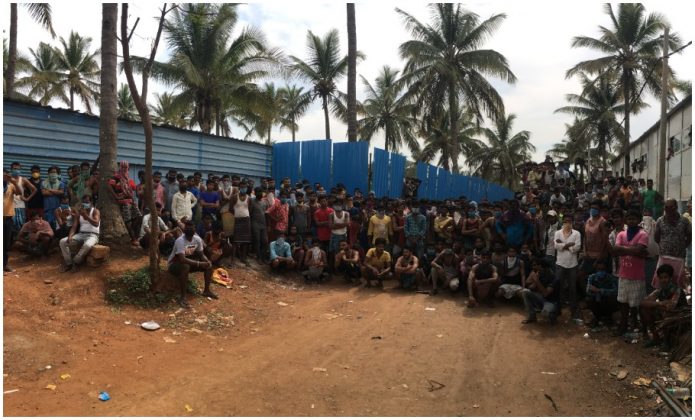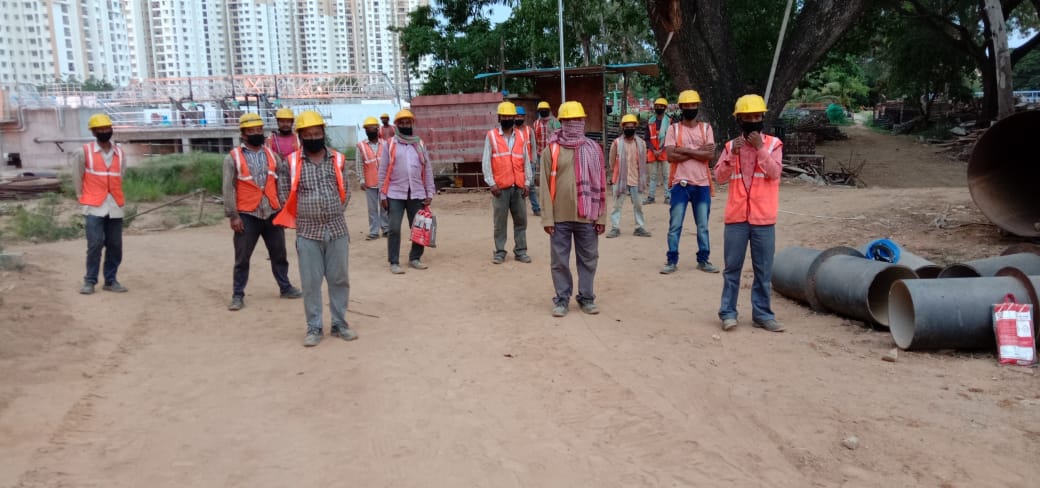
- Home
- India
- World
- Premium
- THE FEDERAL SPECIAL
- Analysis
- States
- Perspective
- Videos
- Sports
- Education
- Entertainment
- Elections
- Features
- Health
- Business
- Series
- In memoriam: Sheikh Mujibur Rahman
- Bishnoi's Men
- NEET TANGLE
- Economy Series
- Earth Day
- Kashmir’s Frozen Turbulence
- India@75
- The legend of Ramjanmabhoomi
- Liberalisation@30
- How to tame a dragon
- Celebrating biodiversity
- Farm Matters
- 50 days of solitude
- Bringing Migrants Home
- Budget 2020
- Jharkhand Votes
- The Federal Investigates
- The Federal Impact
- Vanishing Sand
- Gandhi @ 150
- Andhra Today
- Field report
- Operation Gulmarg
- Pandemic @1 Mn in India
- The Federal Year-End
- The Zero Year
- Science
- Brand studio
- Newsletter
- Elections 2024
- Events
- Home
- IndiaIndia
- World
- Analysis
- StatesStates
- PerspectivePerspective
- VideosVideos
- Sports
- Education
- Entertainment
- ElectionsElections
- Features
- Health
- BusinessBusiness
- Premium
- Loading...
Premium - Events

Jobless at home, migrant workers return to cities
With the government having no record of migrant workers, it’s obvious that they cannot plan anything for migrant workers, especiall in home states.

About six weeks after the COVID-19 lockdown was imposed, Ranjan Garu from West Bengal was among the thousands of migrant workers without a job or source of income yet to go back home. While millions like them had taken the road home by foot, Ranjan and about 1,800 other workers were confined inside the work site of a construction firm in Bengaluru. The government had started special trains...
About six weeks after the COVID-19 lockdown was imposed, Ranjan Garu from West Bengal was among the thousands of migrant workers without a job or source of income yet to go back home.
While millions like them had taken the road home by foot, Ranjan and about 1,800 other workers were confined inside the work site of a construction firm in Bengaluru.
The government had started special trains called Shramik Special (Labourer Special) but against all logic, their employers asked them to resume work and the BS Yediyurappa-led BJP government in Karnataka cancelled all trains and inter and intra-state buses that would have taken them home.
After uproar from workers and activists, and with the Karnataka High Court’s intervention, the state revoked its decision days later and Ranjan happily boarded the special train home.
“Once I returned to West Bengal, I spent 14 days in institutional quarantine. Then for 10-12 days, I worked in paddy fields. Then again I was jobless for 15 days. I tried to work in a metal casting unit, but that too I could get only for 2-3 days a week. So it was getting difficult to run the family sitting idle at home with no source of income,” Ranjan says.
As the government relaxed the lockdown in phases, Ranjan tried harder, but economic activities had not picked up. He says the government did not even offer him the 100 days of job under the rural employment scheme, MGNREGA.
With no option left, Ranjan returned to the city that he had hoped to leave behind, and started working for another contractor in a different part of the city.
All hopes of finding jobs within their states and near their homes, as promised by governments and leaders, faded away quickly.
With demand for labour high due to the migrant crisis, Ranjan got higher wages this time. He now earns ₹400 a day against the ₹300 he got before lockdown.
State of migrants
Another worker, Ambuj Gope from Purulia in West Bengal says he too could not find a job in Kolkata. “I have two kids and a small farm. Although I have studied till class 11, I could not find any job within the state. So, I had no option but to return,” Gope said.
Like Ranjan, Anil Gupta, a migrant worker from Jharkhand, fought with his employer, Bengaluru Metro Rail Corporation, when he was eager to leave the city in May, but was not allowed. He was sure that he would not find the same job if he returned. But he says, after being jobless for two months, his contractor came to his village and offered jobs to about 70 people.

Since September, he’s been working for the state-owned Gujarat Industrial Development Corporation. While he’s not happy to have left home, he says he was left with no option.
In poll-bound Bihar, several workers, although unhappy with the Nitish Kumar government, say they could not wait for elections or festivals.
“When we cannot afford to have the next meal with little or no savings, how can we think of elections or festivals? We returned to work in another state as soon as the lockdown ended,” says Ravindar Kumar.
He now works for 20% lesser wages (compared to his March earnings) in the fabric industry in Kunigal, about 70 km from Bengaluru.
When the crisis hit, Prime Minister Narendra Modi announced Rs 1,000 crore from the PM-Cares fund for the welfare of migrant workers.
The PM also said that skill mapping of the rural migrant labour force would be done to help them find work closer home. Also, to facilitate employment of migrant workers who have gone back to their home states, the government launched Pradhan Mantri Garib Kalyan Rojgar Abhiyan in 116 districts in mission mode. But the ground reality is far from these plans and numbers.
With lack of data on migrants from each state it was not clear how much each state would receive. Neither is the data made public.
However, the Centre did make an effort to boost the MGNREGA jobs. It increased the per day wages under MGNREGA from ₹182 to ₹202. Bihar, Jharkhand, and Odisha — three of the home-states with most migrants — saw employment generation for almost 93 lakh persons under MGNREGA in four months to September.
The central government increased the budget allocation of MGNREGA from ₹61,500 crores to about 1 lakh crore after the stimulus package to fight the COVID-19 pandemic was announced.
While the announcements were in the right direction, the last mile delivery of benefits remained a challenge. For instance, the Centre for Global Development, a policy think tank, which analysed the digital cash transfer scheme for stranded migrants under the Bihar government’s Corona Sahaay (assistance) programme, highlighted that not only was the cash assistance insufficient, but also technology, and lack of smartphones acted against the interests of migrants and caused additional hardship.
“People had to find alternative means to access the government’s online portal in the middle of a stringent lockdown. Moreover, the bank account had to be linked to Aadhaar to receive the payment, adding another layer of uniqueness but also potential for exclusion of those in need,” CDG noted.

Karnataka labour minister Shivaram Hebbar tells The Federal that except for the garment industry, all other works have resumed in October and that the state can offer jobs to migrants.
“There’s plenty of jobs waiting. Nearly 90% of the industries have resumed work. And about 65% of migrants who left the state during the crisis time, have returned to work,” Hebbar says.
But analysts and experts in the industry believe that the industries haven’t picked up pace and that it will certainly have an impact on the Bihar election.
Political analyst Narendra Pani says while there is no data to indicate how many people returned, the frustration against the government is very much there for showing lack of support to people in needy times.
Not heeding courts
When asked about what policy measures the government has put in place to ensure the protection of migrants, after various courts directed the states and Centre to take care of them, Hebbar said nothing was in the pipeline.
When the migrant crisis was at its peak in May, the Supreme Court had suggested that the government (Centre and states) identify stranded migrant labourers, formulate a nationwide plan/schemes for medicine, food and shelter, release of financial relief announced, formulation of scheme for employment, education, wellbeing and launch awareness programmes.
The states were also tasked to get the details of migrant workers, nature of their skill, place of their earlier employment, which all were required to be maintained in a prescribed format at village, block and district levels so that necessary help can be extended by state and district authorities.
But not much seems to have been done on that front.
The Ministry of Labour and Employment in a written reply in Lok Sabha said 1.04 crore migrant workers had returned to home states. However, the ministry did not have any data on migrants who lost their jobs and livelihood during the crisis time.
Minister Santosh Kumar Gangwar told Parliament that “no such data is maintained” when asked if the government had carried out any assessment of job losses of migrant workers. The government also did not maintain any data on workers who died on their way back to their home states during the lockdown.
While migrant workers left the cities on emotional grounds and to be with their families during the health crisis, neither the state governments nor the Centre formulated anything to protect their interest.
“Promises are one thing and delivery is another. Economic output hasn’t picked up from the near 25% fall in the first quarter of the year. A large number of MSMEs are not going to recover for some time as they would accumulate other liabilities,” Prof Abhijit Sen, former member of Planning Commission of India said. “Resuming jobs doesn’t indicate economic revival, but it’s only the desperation of workers to make a living.”
With respect to MNREGA jobs, Sen says while the employment guarantee is merely for 100 days for a household, each person at max may end up getting a month’s work. And that is not a feasible solution for many. So they cannot depend on that and hence would want to get back to cities.
“With the government having no record of migrant workers, it’s obvious that they cannot plan anything for them. But the fact that they are returning to cities shows that no hope is left in home states,” he adds.
